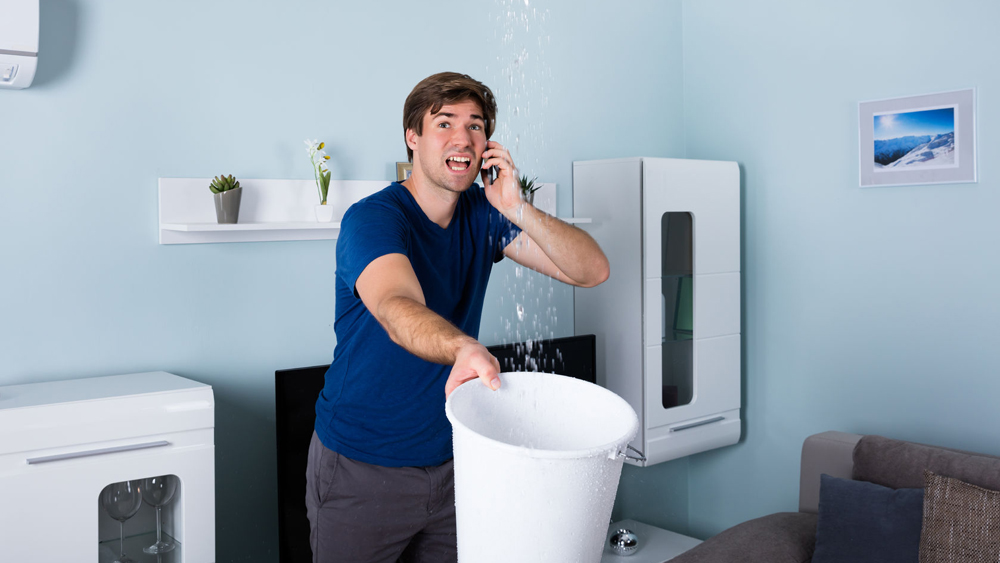The Residential Primary Common Leak Factors: Examination
The Residential Primary Common Leak Factors: Examination
Blog Article
Listed here in the next paragraph you might get additional very good guidance concerning How to detect water leaks in your home.

Leaks not just trigger waste of water however can likewise create unneeded damages to your home as well as promote undesirable organic growth. By understanding and also looking for daily situations that create leaks, you can shield your home from future leaks as well as unneeded damages.
Instantaneous temperature modifications.
Severe temperature level modifications in our pipes can cause them to broaden and also get all of a sudden. This growth as well as contraction may cause splits in the pipes, specifically if the temperature level are below freezing.
Rusty water systems
As time passes by, your plumbing system ages as well as corrosion such as corrosion might begin eating away the pipes. This may be the reason for staining or bending on your pipes. This asks for an inspection with your plumber instantly. Take into consideration replacing the pipes because they are at a greater threat of deterioration than the newer designs if our plumbing system is old.
Defective Pipeline Joints
The point at which your pipelines attach is frequently the weakest web link in the waterline. Pipe joints can weaken gradually, causing water leaks. However, the majority of pipeline joints are not conveniently visible. If you have loud pipelines that make ticking or banging sounds, particularly when the hot water is switched on, your pipeline joints are most likely under a lot of stress. It is advisable to have your plumber evaluate your system annually.
Intruding origins
The majority of water leaks begin outside the house as opposed to inside it. If you see an abrupt decline in water stress, state in your faucet, take some time to head out and also analyze your yard. You could discover wet spots or sinkholes in your lawn, which might mean that tree roots are attacking water lines triggering water to permeate out. You can have your plumber look for intrusion, particularly if you have trees or hedges near your building.
Poor Water Connectors
Sometimes, a leak can be brought on by loose pipes and also pipes that provide your home appliances. Generally, changing is what triggers the loosened water Links. You may discover when it comes to a washing maker, a pipe might spring a leak because of trembling during the spin cycle. In case of a water links leakage, you may notice water running straight from the supply line or puddles around your home appliances.
Clogged Drains
Clogged drains pipes may be annoying and inconveniencing, yet they can occasionally end up causing an overflow causing burst pipelines. Keep eliminating any materials that might go down your drains that could obstruct them to stay clear of such aggravations.
All the above are reasons for leaks yet not all water leaks result from plumbing leaks; some leakages could originate from roof leaks. All leaks should be repaired immediately to avoid water damages.
Leakages not just create waste of water but can also trigger unnecessary damages to your residence and promote undesirable natural growth. By looking as well as comprehending for day-to-day scenarios that cause leakages, you can shield your home from future leakages and unnecessary damage. Today, we will look at 6 leak causes that may be causing your pipes to drip.
At times, a leak can be triggered by loose hose pipes and also pipes that supply your home appliances. In instance of a water links leakage, you might observe water running directly from the supply line or puddles around your appliances.
How To Check For Water Leak In Your Home
How To Check for Leaks
The average household's leaks can account for nearly 10,000 gallons of water wasted every year and ten percent of homes have leaks that waste 90 gallons or more per day. Common types of leaks found in the home are worn toilet flappers, dripping faucets, and other leaking valves. These types of leaks are often easy to fix, requiring only a few tools and hardware that can pay for themselves in water savings. Fixing easily corrected household water leaks can save homeowners about 10 percent on their water bills.
To check for leaks in your home, you first need to determine whether you're wasting water and then identify the source of the leak. Here are some tips for finding leaks:
Take a look at your water usage during a colder month, such as January or February. If a family of four exceeds 12,000 gallons per month, there are serious leaks.
Check your water meter before and after a two-hour period when no water is being used. If the meter changes at all, you probably have a leak.
Identify toilet leaks by placing a drop of food coloring in the toilet tank. If any color shows up in the bowl after 10 minutes, you have a leak. (Be sure to flush immediately after the experiment to avoid staining the tank.)
Examine faucet gaskets and pipe fittings for any water on the outside of the pipe to check for surface leaks.
Undetected water leaks can happen without the home or business owner even realizing. If you suspect a water leak, but not able to find the source. It is time to contact a professional water leak detection service, The Leak Doctor.
How To Find a Water Leak In Your Home
https://www.leakdoctor.com/blog/How-To-Check-For-Water-Leak-In-Your-Home_AE197.html

I'm certainly very intrigued by Most Common Causes of Leaky Pipes and I hope you enjoyed reading the new post. Feel free to take the opportunity to promote this write-up if you appreciated it. I value reading our article about Most Common Causes of Leaky Pipes.
Get Estimate Report this page